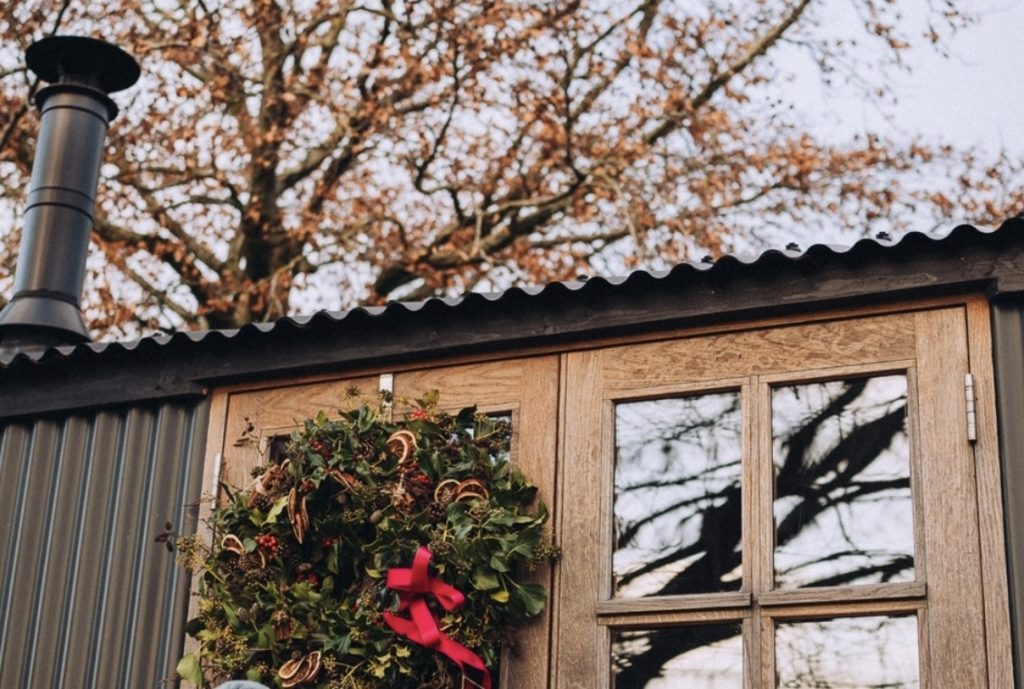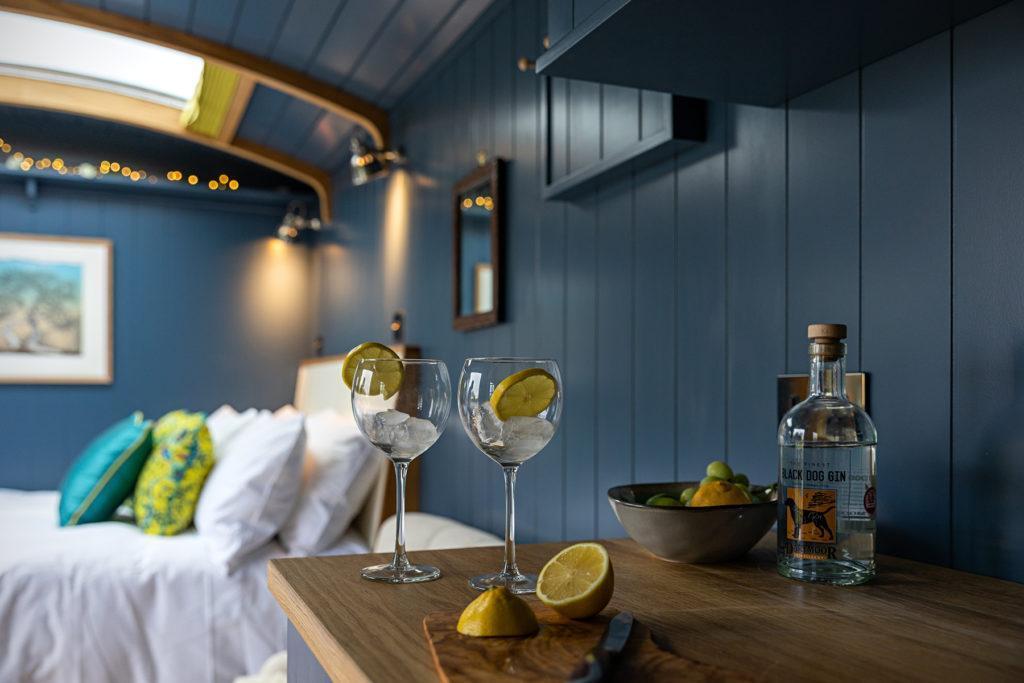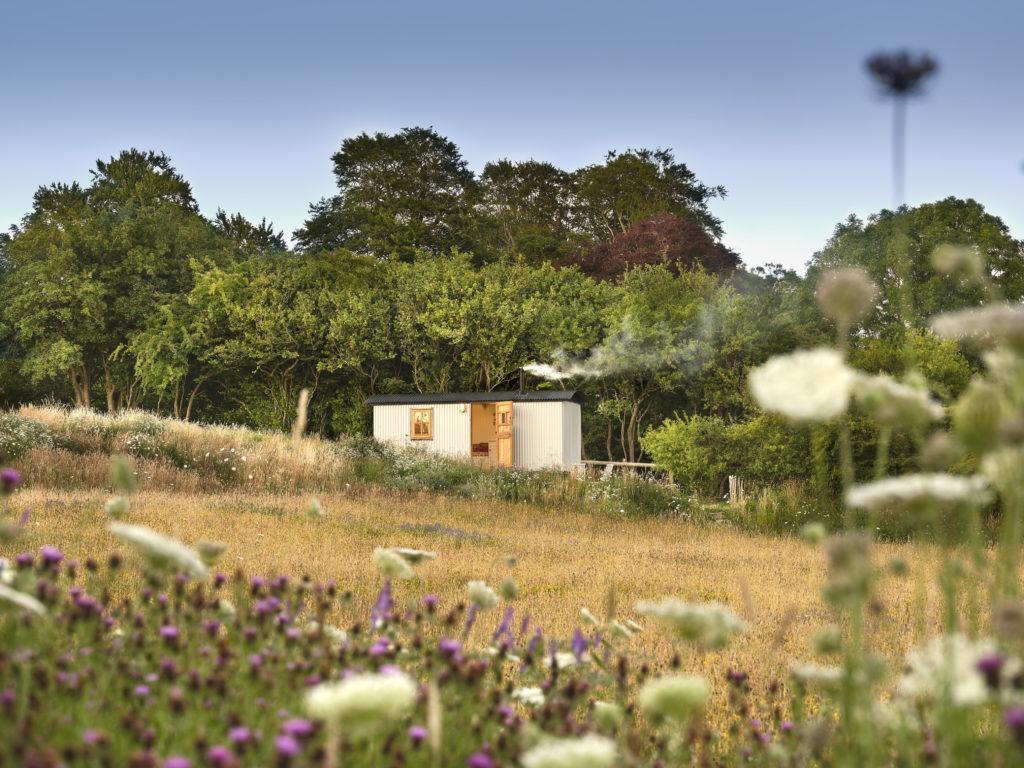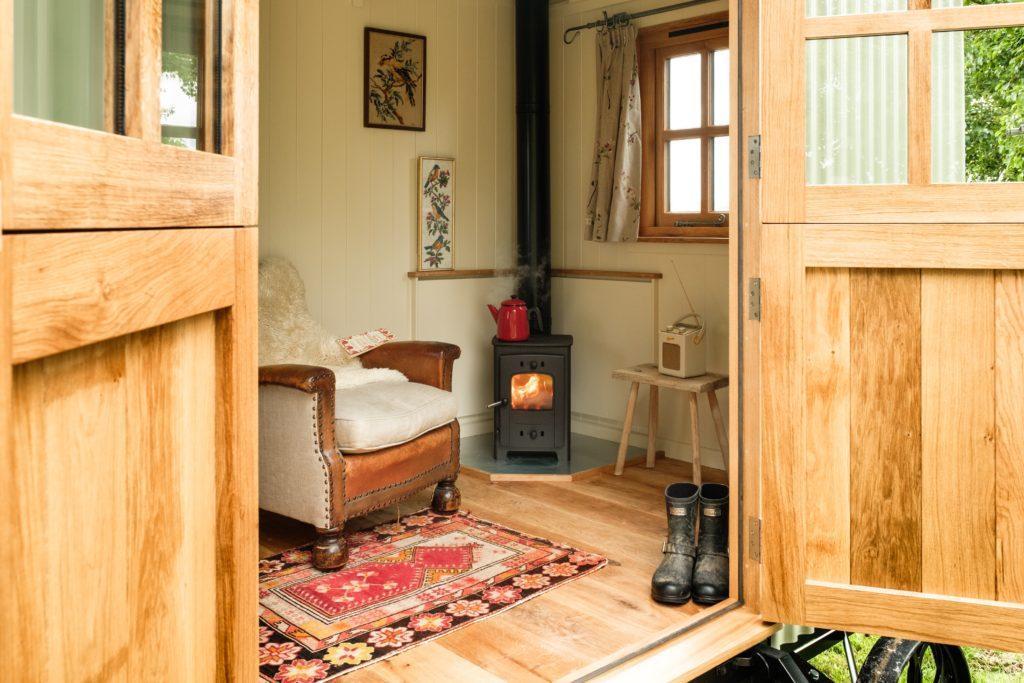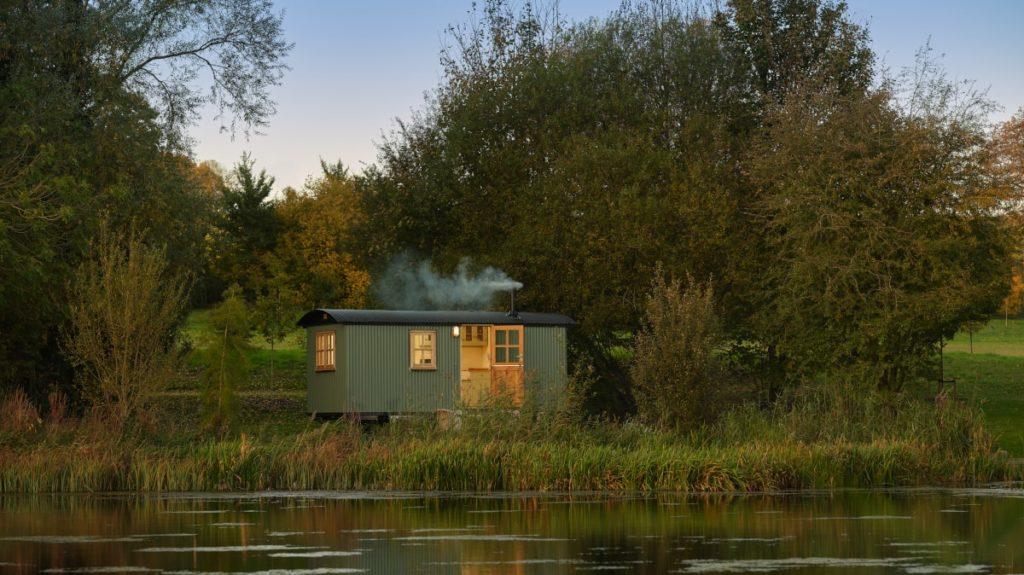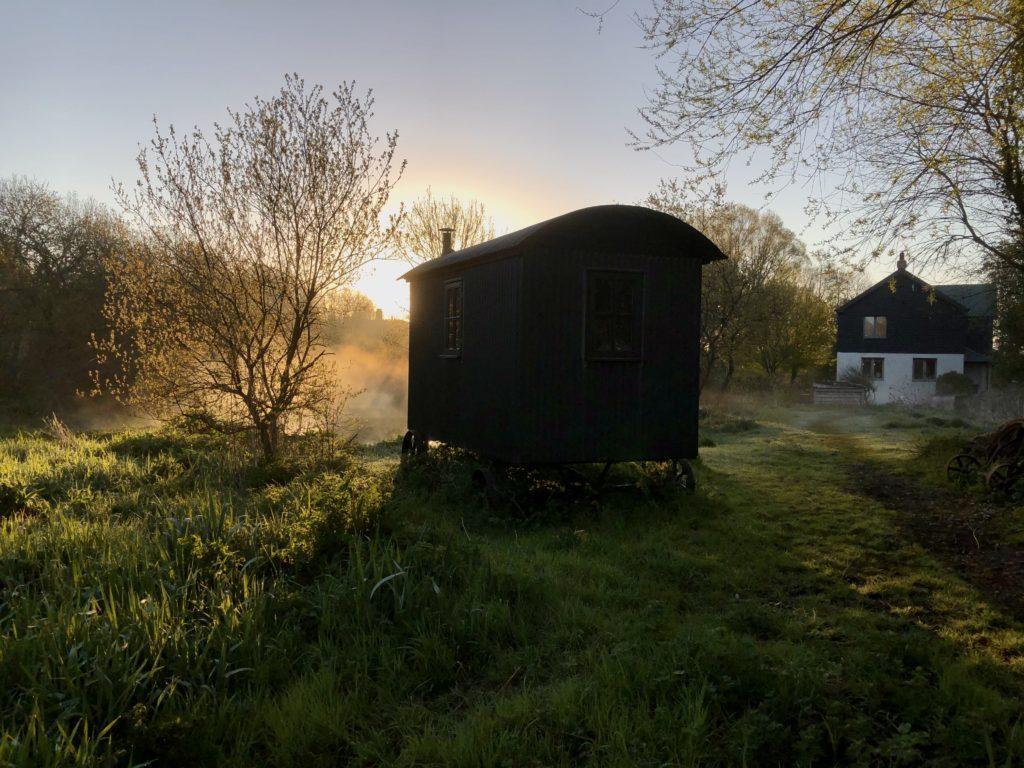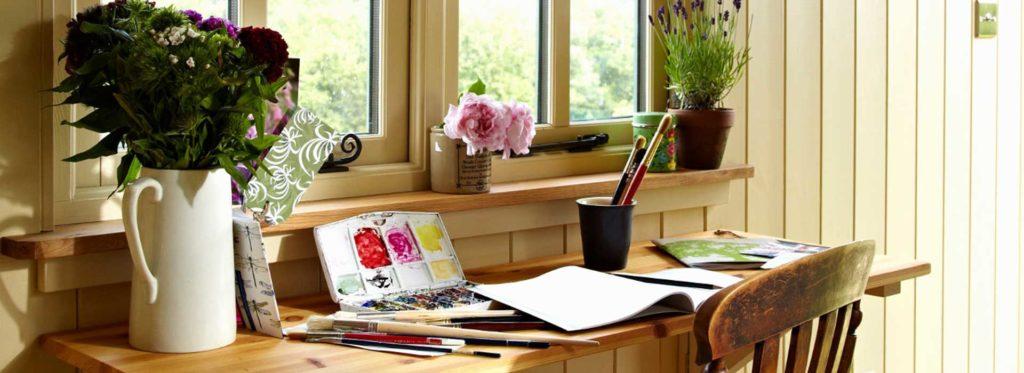I’ve dispatched myself to my shepherd’s hut at home to work on the next Musings from the pondside. There’s Shrimp, our lovely old border terrier at my feet, snoring contentedly whilst his brother Midge is close by and Dipper, the yellow labrador, is pondering life in the doorway. It’s mid-summer’s day, so it’s a good day to be thinking about what we do with regard to sustainability.
I’m sitting at my desk looking out on abundance. The few acres of former watercress beds are managed as a small wetland nature reserve, and we hope one day to get a colony of water voles established again; they were abundant here not so long ago. The view from the window would be in danger of being dominated by the overly prolific growth of tall hemlock water dropwort which is poisonous, particularly if the roots get exposed to farm animals. We cut this back, both with a mattock when it emerges in early Spring and with shears and a power scythe before the seed sets.

I’m not sure the hemlock would ever have established quite like it does now, there never used to be so much and it seems to get worse year on year along the river banks of Dorset. There are a lot of umbellifers that do look very similar so we have to be selective; we have the wonderfully named corky-fruited water dropwort here too, and many umbellifers have a role in the ecosystem. I do see roe deer eating the hemlock which always surprises me, but as roe are browsers of a wide range of plants they are able to process some toxic plants that others leave well alone. It’s all about balance, there are so many marsh thistles and comfrey in full flower which the bumble bees are really appreciating, together with some nettles and the seeding fronds of reed sweet-grass. In amongst it all are drifts of Southern Marsh orchids, and in the tighter, more mechanically grazed areas the diversity increases year on year with yellow rattle, vetches, rushes and water mint.
So it is an abundance that we carefully manage with a light touch. Much like an over-abundance of important stands of nettles, the hemlock disappears after a few cuts. So I selectively cut and rake small areas, well timed throughout the year as the ancient wild auroch cattle and wild boar would have done, and then announce that ‘the aurochs have been through again’ on my return to the house, usually to raised eyebrows.
So treading carefully is what we do. By using a finger mower power scythe so that it cuts cleanly, I really do let most things be abundant and do as it pleases, whilst selectively managing the bits that need it, just as though the aurochs and boar have passed by. It is teaming with life because of it, and the wide variety of insects and nesting birds are doing noticeably well this year. We have bullfinches, wrens and blackbirds nesting successfully around the house and even a grasshopper warbler was here in early Spring.
As a thriving business we use a lot of materials, and it’s so important that we feel content that they are as sustainable as possible. It’s not greenwashing or marketing hype, it’s absolutely genuine and at the core of what we do.
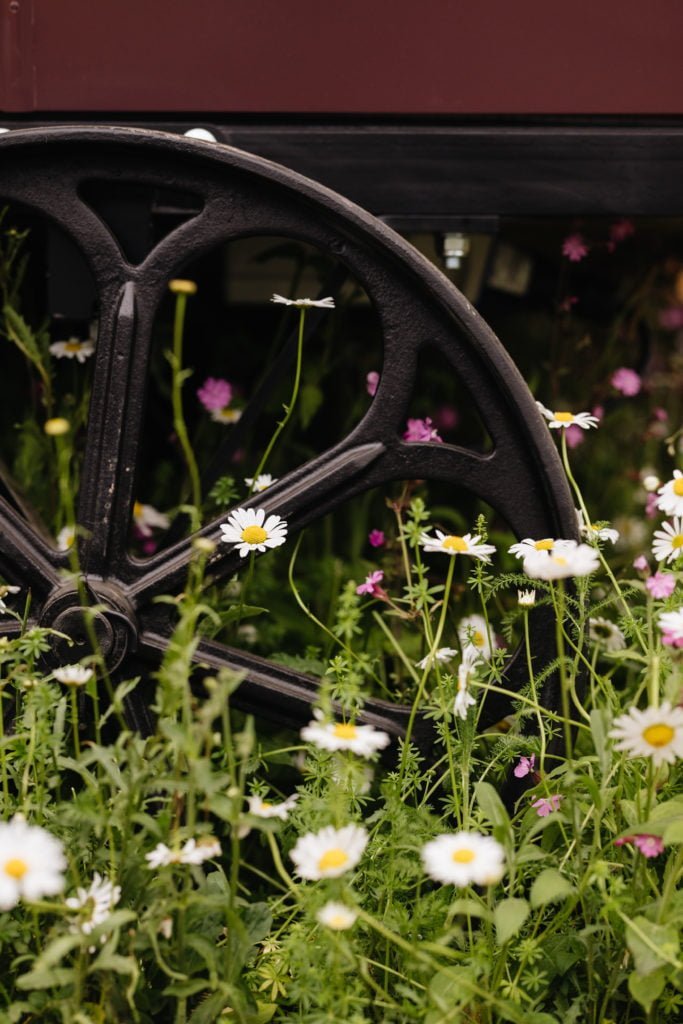
The African rainforests would of course be so abundant if we were to witness them in person, and yet I’m not sure that the management of them would be quite as we would hope for. I feel that places that, so far, have been untouched by the human hand would be best left well alone. Between Poland and Belarus, the Bialowieza forest, there apparently remains thousands of hectares of ancient woodland managed only by nature; in the UK there are none now. Humans have intervened in some way so it feels that it’s better, if we could, to use timber sourced from managed British woodlands, that were re-planted to provide materials for future generations, than to impact on the abundant of virgin forests of Africa, South America and Indonesia. Those resources will no doubt continue to be harvested, or enter a cycle of felling and replanting. I was once told, and I suppose it’s true, that ‘behind every feature, and every creature, lies an economy’. Of course there is so much global demand for materials that the UK resource would never be enough, but our own needs as a business are relatively low volume. I sincerely hope that all forests are replanted for future generations. But delve into this further and you will discover that vast areas of virgin rainforest are being cleared for beef production. Having avoided tropical hardwoods for over thirty years I want no part of it.
So we use only temperate timbers, from the abundant, well managed European and UK forest resource, and FSC / PEFC certified supplies from the USA and Canada, although we are using less from there than we used to. We recently tried a cladding product which is described as better than carbon neutral. It is a blend of 95% wood fibre and natural wax, and is pressed into a stable and very durable exterior cladding board that looks great.
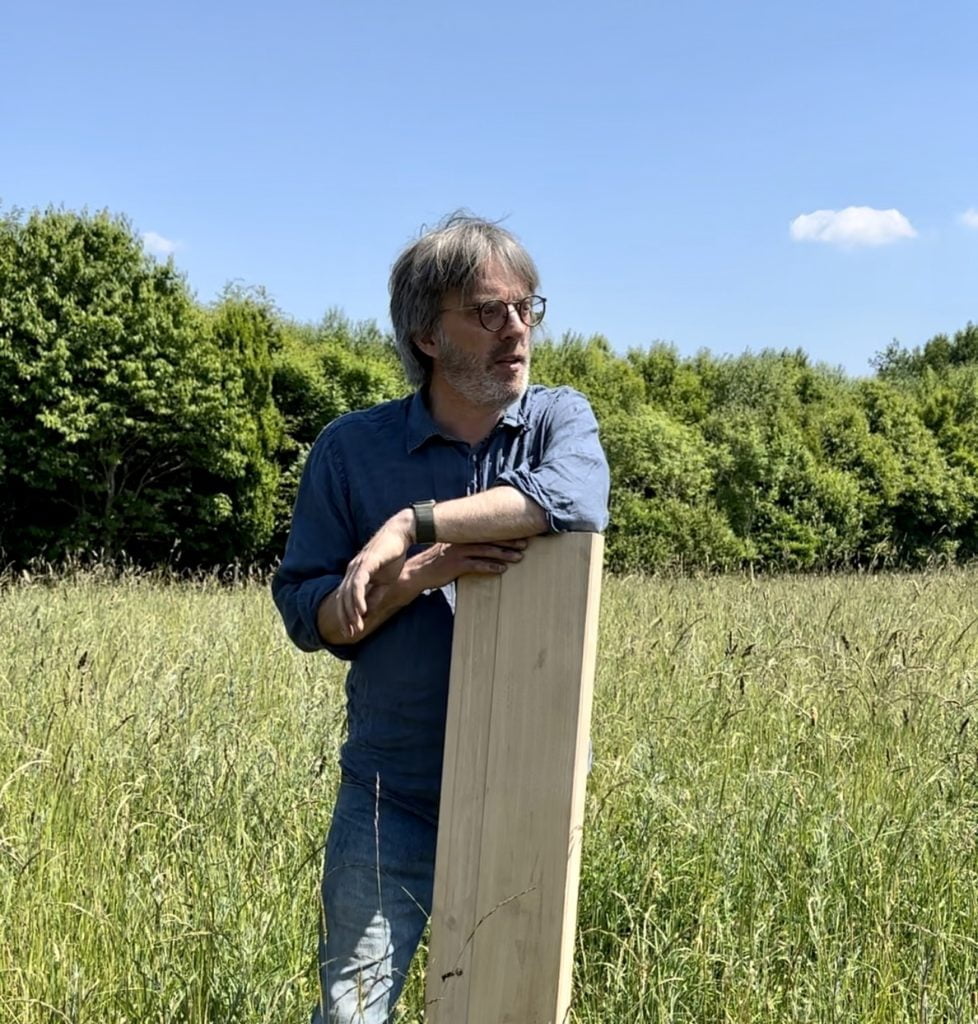
Going forward we will attempt to utilise as much home-grown timber as possible. We already use Sweet Chestnut for our steps and for the windows and door joinery of the new RHS Bothy design, and English and European oak for our usual windows and doors. English ash makes a beautiful floor, and I’ve got a few ideas to explore for the internal lining timber, and for now a V-grooved sheet material from Ireland is extremely sustainable and is a very good stable base for our professional paint finishing.
I have this crazy idea that one day Plankbridge could buy some land and plant deer-fenced stands of hundreds of useful well-managed timber trees for future generations, whilst allowing natural swathes of land, half of it, to regenerate around them.
Then I can sleep easy, content that we have done our best.
Author: Richard Lee

